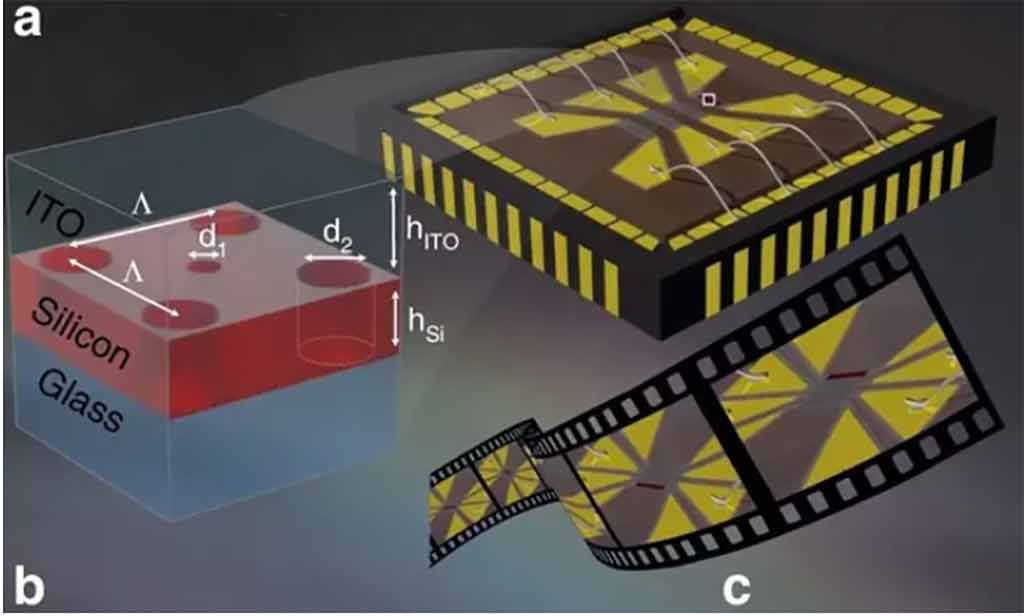Though some modern high-end televisions may sport quantum-dot displays or OLED panels, many of the cheaper models available will use LCD (liquid crystal display) technology, polarizing filters and LED backlighting. But the researchers say that the limit has been reached for development of this kind of technology.
To control individual pixels at a high modulation rate, the proof-of-concept platform employs transparent conductive oxide to serve as an electrically driven heater that can quickly change the optical properties of the silicon metasurface cells, which are reported to be 100 times thinner than liquid crystal cells or 200 times thinner than a human hair. The technology results in response times of under a millisecond – 10 times faster than the detection limit of the human eye.
“We have paved the way to break a technology barrier by replacing the liquid crystal layer in current displays with a metasurface, enabling us to make affordable flat screens liquid crystal-free,” said lead researcher Mohsen Rahmani, Professor of Engineering at Nottingham Trent University’s School of Science and Technology. “The most important metrics of flat panel displays are pixel size and resolution, weight and power consumption. We have addressed each of these with our meta-display concept.
“Most importantly, our new technology can lead to a huge reduction of energy consumption – this is excellent news given the number of monitors and TV sets being used in households and businesses every single day. We believe it is time for LCD and LED displays to be phased out in the same way as former cathode ray tube (CRT) TVs over the past 10 to 20 years.”
pll/lam/lpn









